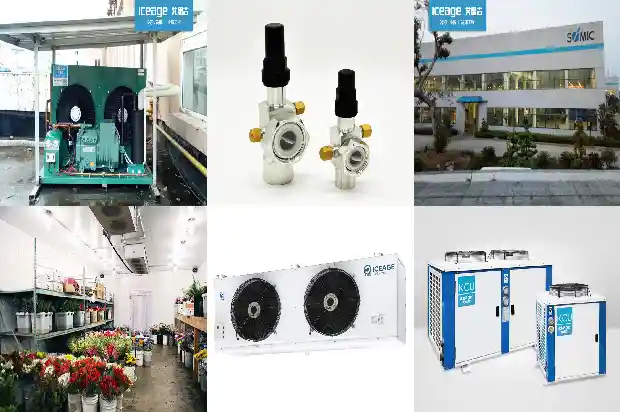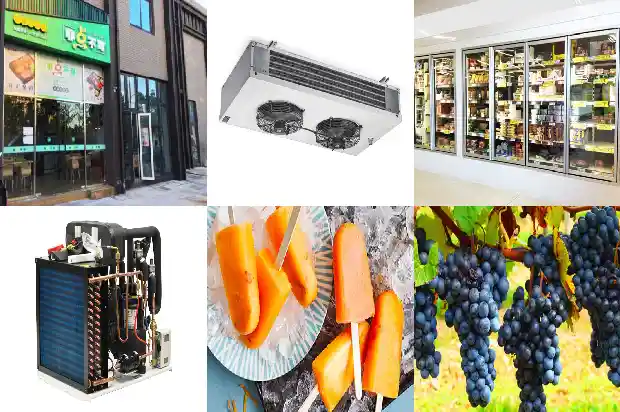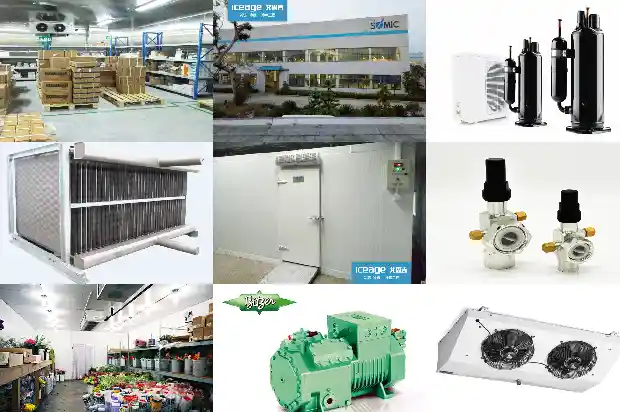What inspections are required for central air conditioning installation?
2024-09-19
Nowadays, with the improvement of people's living standards, more and more household users choose to install central air conditioning products to improve the aesthetics of decoration and living comfort. It is worth noting that central air conditioning products emphasize "three points for products and seven points for installation". Especially for daily use, the installation link is even more important.
As a semi-finished product equipment, if household central air conditioning is installed unqualifiedly, it will also bring a lot of troubles in subsequent use. Therefore, the installation of household central air conditioning must pay attention to acceptance inspection and do a good job in inspection to avoid potential hidden dangers.
So, what aspects of acceptance inspection are needed for installing central air conditioning?
Acceptance inspection before installation
As we all know, central air conditioning needs to be installed with auxiliary materials.
The equipment mainly refers to the brand, model and power of the outdoor unit and indoor unit of central air conditioning. To avoid refurbished machines or non-standard units, you can check the body code of central air conditioning (each air conditioner has an independent code); the acceptance inspection of installation materials mainly confirms the brand, specification and quantity of installation materials to avoid some merchants substituting inferior materials and damaging the interests of owners.
Acceptance inspection during construction
The acceptance inspection during construction mainly includes: confirmation of equipment installation position, whether pipeline installation is standardized, etc.
As the owner, what needs to be accepted is the confirmation of the equipment installation position. Check whether all indoor units and outdoor units are installed at the positions marked on the construction drawing, and confirm that all equipment installations are firm and reliable. For example, indoor units are fixed with double nuts, outdoor units are added with shock-absorbing pads, and the air outlets and return air inlets of indoor units do not conflict with the cabinets installed indoors. The installation of indoor unit air outlets should avoid obstacles and avoid the situation of short circuit of return air.
The pipeline layout can also most highlight the professionalism of installers. Warning labels should be pasted on the insulation pipes on the outside of the pipeline to avoid the pipeline being moved and damaged by the construction team later. In addition, when installing the condensate water pipe, a sufficient slope (not less than 1%) should be reserved, and attention should also be paid to the exhaust treatment of the condensate water pipe to facilitate the easier discharge of water in the pipeline and no air accumulation phenomenon will occur, and then the condensate water will flow back. This is the main reason for water leakage in many central air conditionings.
In addition, it is necessary to check whether the installation of the external unit power cord, internal unit power cord and temperature control signal line of the central air conditioning is reasonable and in place.
Commissioning and acceptance inspection after installation
The completion of central air conditioning products is almost at the end of decoration. After all air outlets and return air inlets are installed, temperature control panels are installed, and power cords are connected, it is the test of the effect of central air conditioning. It mainly includes: testing whether the effect of central air conditioning meets the standard, whether the noise during equipment operation meets the standard, and potential safety hazards during operation need to be checked.
When accepting and inspecting the use effect of air conditioning, it is necessary to detect the air outlet situation of the indoor unit air outlet and whether the air outlet temperature can meet the set requirements. The temperature changes of central air conditioning every two hours can be recorded to judge whether the cooling and heating effects of central air conditioning meet the standard.
Secondly, the decibel standard in the actual use process of air conditioning should also be noted. In the normal working mode, the central air conditioning should run without vibration and smoothly, and the noise emitted meets the design standard. If there is large vibration, abnormal noise, etc., the installation results should be checked, and the equipment interior and parameters should also be debugged and checked, and timely maintenance treatment should be done.
In addition, during the commissioning and use period, the drainage and power supply during the operation of the air conditioning should also be checked to determine whether there is water leakage and electric leakage.
As a semi-finished product equipment, if household central air conditioning is installed unqualifiedly, it will also bring a lot of troubles in subsequent use. Therefore, the installation of household central air conditioning must pay attention to acceptance inspection and do a good job in inspection to avoid potential hidden dangers.
So, what aspects of acceptance inspection are needed for installing central air conditioning?
Acceptance inspection before installation
As we all know, central air conditioning needs to be installed with auxiliary materials.

The equipment mainly refers to the brand, model and power of the outdoor unit and indoor unit of central air conditioning. To avoid refurbished machines or non-standard units, you can check the body code of central air conditioning (each air conditioner has an independent code); the acceptance inspection of installation materials mainly confirms the brand, specification and quantity of installation materials to avoid some merchants substituting inferior materials and damaging the interests of owners.
Acceptance inspection during construction
The acceptance inspection during construction mainly includes: confirmation of equipment installation position, whether pipeline installation is standardized, etc.
As the owner, what needs to be accepted is the confirmation of the equipment installation position. Check whether all indoor units and outdoor units are installed at the positions marked on the construction drawing, and confirm that all equipment installations are firm and reliable. For example, indoor units are fixed with double nuts, outdoor units are added with shock-absorbing pads, and the air outlets and return air inlets of indoor units do not conflict with the cabinets installed indoors. The installation of indoor unit air outlets should avoid obstacles and avoid the situation of short circuit of return air.
The pipeline layout can also most highlight the professionalism of installers. Warning labels should be pasted on the insulation pipes on the outside of the pipeline to avoid the pipeline being moved and damaged by the construction team later. In addition, when installing the condensate water pipe, a sufficient slope (not less than 1%) should be reserved, and attention should also be paid to the exhaust treatment of the condensate water pipe to facilitate the easier discharge of water in the pipeline and no air accumulation phenomenon will occur, and then the condensate water will flow back. This is the main reason for water leakage in many central air conditionings.
In addition, it is necessary to check whether the installation of the external unit power cord, internal unit power cord and temperature control signal line of the central air conditioning is reasonable and in place.

Commissioning and acceptance inspection after installation
The completion of central air conditioning products is almost at the end of decoration. After all air outlets and return air inlets are installed, temperature control panels are installed, and power cords are connected, it is the test of the effect of central air conditioning. It mainly includes: testing whether the effect of central air conditioning meets the standard, whether the noise during equipment operation meets the standard, and potential safety hazards during operation need to be checked.
When accepting and inspecting the use effect of air conditioning, it is necessary to detect the air outlet situation of the indoor unit air outlet and whether the air outlet temperature can meet the set requirements. The temperature changes of central air conditioning every two hours can be recorded to judge whether the cooling and heating effects of central air conditioning meet the standard.

Secondly, the decibel standard in the actual use process of air conditioning should also be noted. In the normal working mode, the central air conditioning should run without vibration and smoothly, and the noise emitted meets the design standard. If there is large vibration, abnormal noise, etc., the installation results should be checked, and the equipment interior and parameters should also be debugged and checked, and timely maintenance treatment should be done.
In addition, during the commissioning and use period, the drainage and power supply during the operation of the air conditioning should also be checked to determine whether there is water leakage and electric leakage.

Related Articles
- Influence of Fin Spacing of Evaporator in Air Cooler on Frost Formation
- Air - side Economizer
- Winter Approaches: How to Solve the Low High - pressure Issue of Air - cooled Condensing Units?
- What Are the Common Causes of Cold Air Blower Noise?
- How to Troubleshoot and Repair High - pressure Protection of Air - cooled Units?
- What Exactly Are the Ten Typical Malfunctions of Air Conditioners?
- What Misconceptions Should Be Avoided in Low - temperature Refrigeration System Repairs
- Practical Knowledge on Freeze Protection of Air - conditioning Equipment
- Remember! 3 Steps to Calculate Central Air - conditioner Cooling Capacity
- How to Read the High - and Low - Pressure Gauges of Refrigeration Air - conditioners?
- Analysis of Seven Reasons for Ice Formation in Computer Room Air Conditioners
- Air - conditioner Low - pressure Alarm? These Nine Common Causes
- Selection of Bypass Control Valves for Air - conditioning Water Systems
- Common Faults and Solutions of Central Air - conditioning Chiller Units
- Could a Tiny Copper Tube Cause a Multi - split Air Conditioner to Stop Cooling? Refrigeration Workers Must Pay Attention!
- Maintenance Techniques for Air - conditioning Refrigeration Systems
- Considerations in Selecting Packaged Air Conditioners and Their Heat Recovery Operations
- Characteristics and Differences among Water System, Air System and Refrigerant System
